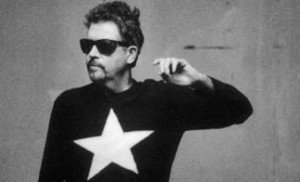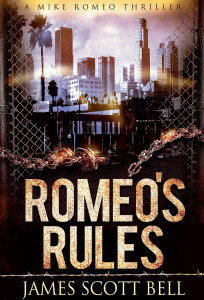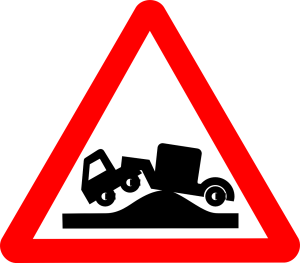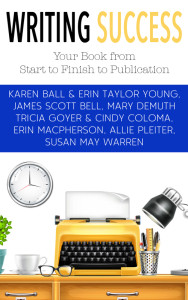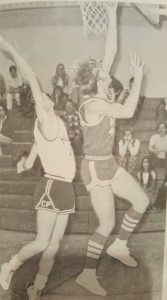 I loved playing basketball. Too many twisted ankles and a knee surgery have taken me off the court and onto the golf course. But my happiest times as an athlete were from junior high school to college, running up and down a hardwood floor.
I loved playing basketball. Too many twisted ankles and a knee surgery have taken me off the court and onto the golf course. But my happiest times as an athlete were from junior high school to college, running up and down a hardwood floor.
High School was best. There is nothing quite like charging into a packed gym with fans cheering, warm-up music blaring, and cheerleaders making with the pom-poms.
Then the game begins, and you’re into it, and sometimes you’re hot, sometimes you’re not. And sometimes you are somewhere in between. You win some, you lose some. There are major highs—like hitting the winning shot at the buzzer. And dismal lows—like losing a championship.
But every one of them is a memory wrapped up in the rush you got from playing, and for that you gladly take the whole package.
And then there are those times when you are in “the zone.” That’s when everything goes so right it feels almost effortless. It’s the apex of athletic experience. It’s like a surfer catching a perfect wave. All you do is ride.
There’s no telling how long the ride will last. You’re just glad it happened.
When I think of my own zone times, there’s one night that stands above all the rest. It was the night I was on fire.
I could not miss. I was swishing 20 footers all over the place. I was dishing passes that would have had Magic Johnson nodding in approval. My Chuck Taylors had wings.
But in the opposing stands there was a guy sitting close to the sideline who started with the smack.
Now, it is every fan’s right to talk trash. They pay for a ticket, they can try to get into the head of the player who is carving up their team. When it happens, you have to answer on the court. You don’t want to give any indication that the digs are getting to you.
So I kept hitting shots.
And the guy kept running his mouth. Get in his face! He’s not that good! He’s slow! He’s afraid!
Yadda yadda yadda.
Then came the play. It’s the most vivid memory of that wildfire night.
I was on a fast break. A fast break is when you try to beat the other team down the floor to their basket. On this particular play I was dribbling up the right side when a player from the other team ran across the court to pick me up.
Without any hesitation I executed my favorite move, the crossover dribble. I switched the ball from my right hand to my left without missing a beat, changing direction as I did. It’s a move I picked up from watching Pete Maravich when I was a kid.
Now I was dribbling across the key toward the hoop. The guy I’d left behind was charging hard to catch up to me.
I could hear the smack-talking fan yelling his lungs out.
As I got close to the basket I sensed the other player getting ready to try to block my layup.
The fire took over.
I jumped in the air, switching the ball to my right hand. I was now actually facing the opposing stands. Without looking I flipped a shot over my head. As I did, I heard the smack talker laugh. He really did. Like I’d just thrown up the worst shot in the history of hoops. He stopped laughing when the ball banked off the backboard and through the net. Just as I knew it would.
As I started back up the court to play defense, I put a huge smile on my face and jogged slowly in front of Mr. Smack. I didn’t have to make eye contact with him. He saw my pearlies. And as I recall he didn’t make another sound the rest of the game.
Writers have a zone, too. You’ve been there. You’ve felt it. Sometimes for an hour of pure creativity, or maybe one whole, glorious day. You can’t force it. It comes unbidden. The fire is spontaneous, but there are some things you can do to lay out the wood.
Why was I able to perform a perfect crossover dribble at just the right time? Because I’d spent hours practicing dribbling on my driveway, often with a chair set up as an “opponent.” I’d go left-to-right, right-to-left, so in a game muscle memory could take over.
How could I shoot over my head without looking at the basket? Because I’d played countless games of HORSE, wherein you try to make trick shots that your opponent can’t duplicate. As a HORSE ninja, I’d always include over-the-head, no-look shots in my repertoire.
Finally, how did I sense where the other player would be? Because I’d been in hundreds of pickup games—two-on-two, three-on-three, four-on-four. Virtually every combination of play near the basket I’d experienced many times.
So you must practice. Not just any kind of practice. I’ve quoted the famous basketball coach Bobby Knight before: “Practice doesn’t make perfect. Perfect practice makes perfect.” If you repeat the wrong things over and over, that’s not going to help you.
Which is why I’ve said that merely writing is not going to make you a better writer.
When you learn something about writing, when you observe the craft at work in a novel, jot yourself a note and then try to do the same thing in your own work. That’s the way you drill. That’s the way you get better.
Second, remember to play. Try things out. Be fearless. In pickup games I’d try out new moves. When I found one that worked, I kept using it.
Finally, do something every day to groove your writing. I used to carry a basketball when I walked to school. Sometimes I’d bounce it, sometimes I’d toss it from one hand to the other, just to implant the feel of it on my fingertips. You can do something each day to improve as a writer. You can:
- Write your quota of words.
- If you can’t write your quota, you can read something about writing (a chapter of a how-to, an article in Writer’s Digest, a blog post from a trusted source).
- You can read a few pages of a novel and think about what the author is doing.
- You can listen to an audio book as you drive or exercise.
- You can write in a journal for five minutes.
- You can carry a small notebook and jot down ideas as they come.
What other things can a writer do? Tell us in the comments.
I’m going to be out most of the day, so talk amongst yourselves. When have you experienced “the zone” in your writing, or in any other pursuit? How’d it feel? What did you do to get there?
***
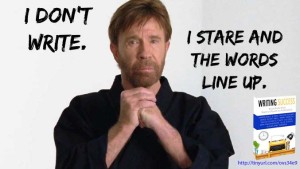
 The brick walls are there for a reason. The brick walls are not there to keep us out. The brick walls are there to give us a chance to show how badly we want something. Because the brick walls are there to stop the people who don’t want it badly enough. They’re there to stop the other people.
The brick walls are there for a reason. The brick walls are not there to keep us out. The brick walls are there to give us a chance to show how badly we want something. Because the brick walls are there to stop the people who don’t want it badly enough. They’re there to stop the other people.


